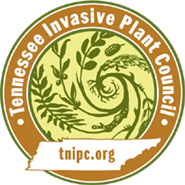Ligustrum obtusifolium Sieb. & Zucc.
Border Privet| Category |
|---|
| Shrub |

Description
Height
Border privet grows 9 to 12 feet (3 m) tall and as wide or wider and is densely twiggy with multiple stems and widely spreading branches.Twigs and Bark
Greenish when young, twigs can have a slight purplish tinge, turn gray with age, and are pubescent with distinctive long and short hairs.Leaves
Leaves are opposite and elliptic to oblong with smooth margins. Medium to dark green and smooth above with hairs underneath particularly on the midvein. Petiole is short to 1/4 inch (3 mm). Leaves are 1-2 inches (2.5-6 cm) long and 1/3 to 1 inch (1-3 cm) wide.Flowers
Nodding dense clusters of white tubular flowers on pubescent stems appear in June. Slight unpleasant fragrance. Flowers are 3/8 inch (1 cm) long, with 4 lobes arranged as two opposing pairs often recurved. Anthers are brownish yellow and protrude slightly from the corolla.Fruit
Berrylike ovoid drupe, 1/4 inch (.5 cm), ripens to blue black in September and persists.Images
Photo: Leslie J. Mehrhoff, University of Connecticut, Bugwood.orgMore images of Ligustrum obtusifolium
Life History
Border privet is in the Oleaceae or Olive Family.Habitat
It is found in moist woods and along stream banks.Origin and Distribution
Border privet is native to Japan and was introduced in 1860. It is planted as an ornamental and was used extensively for highway plantings. Grows best in northern climates. Other states where invasive: MI, IL, PA, NJ, NH, CT, VA. Federal or state listed as noxious wed, prohibited, invasive or banned: CT, MA, NH.Sources: Information on this plant page derived primarily from the Tennessee Management Manual and James H. Miller's Nonnative Invasive Plants of Southern Forests, USDA Forest Service.
Management Recommendations
Mechanical Controls
Mowing/Cutting: This method is appropriate for small initial populations or environmentally sensitive areas where herbicides cannot be used. Repeated mowing or cutting will control the spread of privet, but will not eradicate it. Stems should be cut at least once per growing season as close to ground level as possible.Hand Pulling: Privet is effectively controlled by manual removal of young seedlings. Plants should be pulled as soon as they are large enough to grasp but before they produce seeds. Seedlings are best pulled after a rain when the soil is loose. Larger stems, up to 6 cm (2.5 in), can be removed using a Weed Wrench or similar uprooting tools. The entire root must be removed since broken fragments may resprout.
Biological Controls
Privet has no known biological controls. A foliage-feeding insect native to Europe, Macrophya punctumalbum, is a known pest. Privet is also susceptible to a fungal leaf spot, Pseudocercospora ligustri, and a common root crown bacteria, Agrobacterium tumefaciens.Herbicidal Controls
Foliar Spray Method
This method should be considered for large thickets of privet where risk to non-target species is minimal. Air temperature should be above 65°F to ensure absorption of herbicides. The ideal time to treat is in late fall or early spring when many native species are dormant.Glyphosate: Apply a 2% solution of glyphosate and water plus a 0.5% non-ionic surfactant to thoroughly wet all leaves. Use a low pressure and coarse spray pattern to reduce spray-drift damage to non-target species. Glyphosate is a nonselective systemic herbicide that may kill non-target partially-sprayed plants.
Triclopyr: Apply a 2% solution of triclopyr and water plus a 0.5% non-ionic surfactant, to thoroughly wet all leaves. Use a low pressure and coarse spray pattern to reduce spray-drift damage to non-target species. Triclopyr is a selective herbicide for broadleaf species. In areas where desirable grasses are growing under or around privet triclopyr can be used without non-target damage.
Cut Stump Method
This control method should be considered when treating individual bushes or where the presence of desirable species preclude foliar application. This treatment is effective as long as the ground is not frozen.Glyphosate: Horizontally cut privet stems at or near ground level. Immediately apply a 25% solution of glyphosate and water to the cut stump making sure to cover the entire surface.
Triclopyr: Horizontally cut privet stems at or near ground level. Immediately apply a 25% solution of triclopyr and water to the cut stump making sure the entire surface is covered.
Basal Bark Method
This method is effective throughout the year as long as the ground is not frozen. Apply a mixture of 25% triclopyr and 75% horticultural oil to thebasal parts of the shrub to a height of 30-38 cm (12-15 in) from the ground. Thorough wetting is necessary for good control; spray until run-off is noticeable at the ground line.
